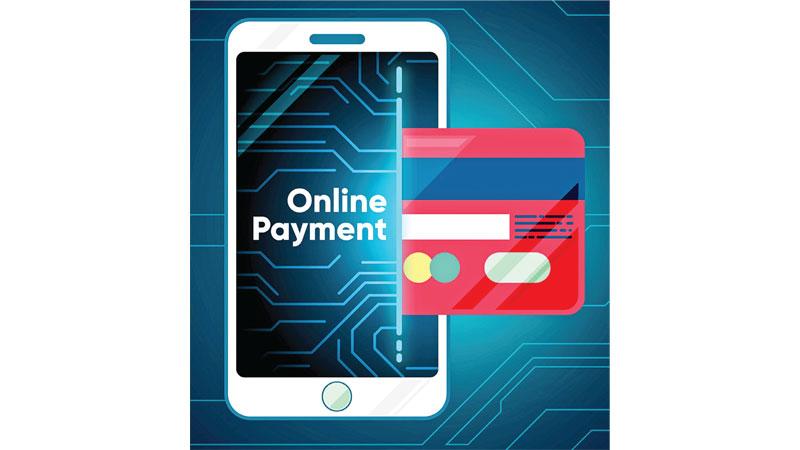
Same as the innovation happens in other sectors, and the payment sector also undergoes technological changes everyday. Business and innovation have been vital in the payments industry and is the cornerstone of financial technology.
Consumer engagement will open the door for all players in the payments innovation. Consumers are always looking to save time, accessibility, user-friendliness, safety and reliability in the payment method they used.
‘New entrants’ to the market, for instance, new banks such as Metro Bank in the UK and rural banks in India are introducing new payment methods to customers. New players in diverse sectors will introduce useful payments methods, such as Facebook, Apple and Telecoms in various countries.
When you are driving a car from office to home, while in severe traffic in Colombo if you can order goods from the supermarket and pay the bill by voice command, you can collect it from the drive-through or it will be delivered to your home before you reach it. This is a simple example of payment innovation.
Decline of traditional methods
The decline in the use of cheques and cash provides a useful context for discussion of payment innovation. Each of these two methods has been contributed as a payment method over many years. Cheques are a relatively high-cost payment method, as well as imposing high costs on users, if cheque use declines, many of the overheads remain.
Also, consumers are not using cheques for their day to day payments. Cheques are still in use for high-value payments, small- and medium-sized enterprise (SME) payments, one-off government payments, dividends, donations etc.
However, cash is displaying trends similar to cheques. Consumer research reveals a decline in cash usage relative to other payment methods since 2007, as it has been replaced by credit cards and online payments like PayPal. However, cash is the most commonly used payment method in low-value payments. The cost of cash use is also significantly lower than for cheques.
AI, IoT and Biometrics lead
Artificial intelligence, machine learning, and biometrics are already paving the way for payment innovation. Technology doesn’t make sense if the application could not be appropriately identified, and it should add value to consumer buying behaviour in every stage.
Your smartphone can do wonders. Today’s technology is strong enough to convert speech to text; cameras will recognise the face of the user and measure minuscule, typing movements with an accelerometer. These features will help to identify the authenticity of individuals.
The biometric authentication provides the highest security compared to other methods. Biometric research shows that worldwide mobile payment transactions reached $250 billion in 2014, reaching $750 billion in annual transactions with over 700 million users by 2020.
The biometric features that come with the smartphones, such as fingerprint or iris scan, are used in mobile payments transactions. Apple Pay uses fingerprints for authenticating payments, and Samsung Pay and Android Pay have followed the same. This method will apply for all mobile banking applications and applications from credit card very soon. Retailers such as Amazon, eBay and AliPay are exploring biometric solutions like facial scanning and fingerprint authentication.
Biometrics authentication helps the customer because they do not want to keep passwords or PIN numbers in mind. It will give easy access to the user, no password changes from time to time, and it is extremely difficult to counterfeit.
In the coming years, we can expect that the forms of biometrics emerge, for instance, fingerprint, voice, facial recognition and iris scanning, would be integrated into the same device. Also, we can experience that wearable biometric tattoo with a thin silicon chip that can be inserted into the skin; you can pay any bill by just closing your hand to the detecting device anywhere in the world.
New brands
When closely observed the market, we can see new payment brands and alternative payment methods entered the market. The payment, such as Apple Pay, Google Pay or Amazon Pay and as well as Chinese players such as Alipay and WeChat Pay, are operating successfully in the international market. In Sri Lanken market, other than the banks, we can see several brands such as PayHere, WEBXPAY, Genie, mCash, and Easy Cash. These players will join with payment infrastructure providers to accept online payment throughout the world.
The global payments accepting procedure is heavily disrupted by new technologies. The massive development of the mobile phone industry helps the expansion of innovation in payment procedures. Banking and finance industry has positively involved the payments innovation and contributed to the ongoing technological disruption in payments procedures. Another critical factor is the rate of user adoption of the technology. Countries like us, the older generation is not much familiar with the technology, overall computer literacy in 2019 was 30.8%, however, in contrast, the group with GCE Advanced Level or above, the level of education showed the highest computer literacy rate of 72.6%. We can expect that this category will use the new payments methods.
Real-time payments updates are also going to impact the buyer and seller strongly, whatever the technology that they use. All payment service providers should have to be agile and set an innovative mindset to deliver a satisfying experience for customers.
Next year will be an exciting year for the payment industry, in the perspective of the buyer and the seller. It will be a bridge between user experience and technology. Finally, the broad spectrum of innovation would not disrupt the customers to make payments. It should be easy and simple.
The writer is the Head of Consultancy, National Institute of Business Management
